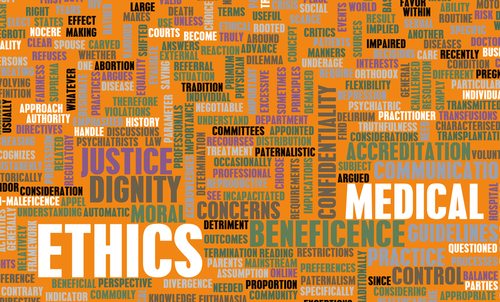
A friend of mine was asked to be the client speaker at a nonprofit organization’s fundraising event recently. She is an educated, compassionate, funny woman raising an equally smart and compassionate son. She wrote a beautiful speech that shared the story of her family, their triumphs, and how this organization helped them navigate a challenging moment. When she got edits back, the speech had been stripped of her individuality and personal successes. And language had been added to suggest she had not been helped by the organization, but rather saved by it.
In an effort to raise money and awareness for causes, nonprofit organizations often feel compelled to tell stories of desperate victims. Well-intentioned efforts to convey the urgency and severity of need lead organizations to reduce people to their problems. And to stand out in the crowded marketplace, organizations often conflate value with heroism, representing themselves as saviors in individuals’ stories. These strategies may succeed in achieving temporary goals—pity does raise money. So does convincing someone they are a hero by giving. But there are bigger dangers inherent in these practices.
Reducing someone to a problem when he offered to share his story—an extraordinary act of charitable giving all its own—is a victimizing act, and it imposes a viewpoint of his situation he may not share. On a broader scale, it can reinforce false stereotypes most nonprofits try to combat about who lives in poverty, who has a mental health condition, and who faces obstacles bigger than they alone can overcome (which is all of us).
I have certainly made these storytelling mistakes. In an effort to convey the urgent need to fix substandard housing, I have told stories that focused on the severity of the housing conditions themselves, neglecting the fact that these stories are firstly about the person experiencing the poor housing, and secondarily about the societal structures contributing to the problem. In my experience, people who work at nonprofits are conscious of the tension between promoting their work and protecting their clients. But the tension is often wrongly associated with the act of storytelling itself—the notion that sharing someone’s story or name is itself victimizing. Storytelling is inherently value neutral, and it can be victimizing or empowering depending on what the narrative says and how it is used.
Here are five ways we can all be more empowering storytellers.
1. Avoid “case example syndrome.”
The companion strategy to over-emphasizing the distressing details of someone’s situation is to stick to short, anonymous descriptions of problems. I call it “case example syndrome,” and it is an epidemic in the nonprofit world. How many times have you read something like this?
Mary (not her real name) came to our program because the trash in her apartment building was attracting mice and violating several housing codes. Her daughter had gone to the emergency room for pneumonia three times. Mary was referred to our program, and we forced her landlord to remove the trash from the building and hire an exterminator. Because of our program, Mary’s daughter is feeling better and has a chance for a brighter future.
Sign up for our free newsletters
Subscribe to NPQ's newsletters to have our top stories delivered directly to your inbox.
By signing up, you agree to our privacy policy and terms of use, and to receive messages from NPQ and our partners.
Organizations often adapt this strategy with good intentions, either to protect clients’ identities or to arrive quickly at the successful intervention. Setting aside the fact that this is not storytelling, this approach is reductionist and removes everything human and relatable. Organizations should always use names and share parts of a person’s story that let the reader know they are more than their disease, their problem, or their circumstances.
2. Ask someone how he wants his story shared.
Great effort goes into finding the right story and messenger for an organization’s events, public awareness campaigns, and public policy initiatives, and it should; it is important to represent the organization’s message well. But telling a story that is beneficial to the organization should not exclude telling one that is beneficial to the individual. Organizations should apply the same empowerment mentality to storytelling that they do to providing services. Ask clients not just if it is okay to share their stories, but to be partners in how and where those stories are told. Be aware of the power dynamic present in asking someone to share her story, and remind her that the choice to speak out is hers to make. When the story is finished, stop and ask yourself, “If this were about me, would I want my story shared in this way?”
3. Represent your organization as a partner in a person or community’s success, not a savior.
I work with civil legal aid agencies and healthcare institutions to build cross-sector partnerships that help address systemic issues of hunger, housing, and health. The individuals who come through the doors of these partnerships are already working hard to help themselves. And despite the stress of their circumstances, they are raising families and experiencing great joy. When these partnerships work right and a housing problem is solved or someone is enrolled in health insurance, it does make a difference. But the individual’s advocacy was a big part of that success. Think of ways to use storytelling to convey that advocacy—personal and systemic—is successful because individuals and organizations work toward a goal together.
4. Ensure others can see themselves in the story.
People may donate money when they feel pity toward someone, but stereotypes about poverty, illness, and marginalization are broken when people recognize a family member or friend’s experience in a story. When we work with people who are vulnerable financially, physically, or emotionally, one of the first things we do is try to normalize their experience. Why shouldn’t part of our storytelling strategy be to ensure others can see some part of themselves or their experience in a person’s story?
5. Challenge myths about the issue you address.
We live in a world with an increasingly short attention span, and organizations face pressure to be captivating in 140 characters or less. But brevity does not require surrendering nuance or playing into stereotypes. In fact, challenging myths about your issue and offering a surprising perspective is a good way to get people’s attention, and there is no better tool for doing so than human story. So choose an unlikely protagonist or find a new, empowering angle for an old issue. Tell the unexpected story.
Telling empowering stories is critical to the long-term goals of changing public opinion and policy around the issues nonprofits address and people they serve. While I am not sure what impact these practices would have on short-term goals like fundraising, I would like to believe we can all be inspired to give money or time because we see our own moments of need reflected in our neighbors’ stories. I write this as a reminder to myself to be more conscious of the ways I tell stories, and in hopes that we, as a nonprofit community, will hold each other accountable to keep human well-being not just at the center of the work we do, but also at the center of the stories we tell about it.








